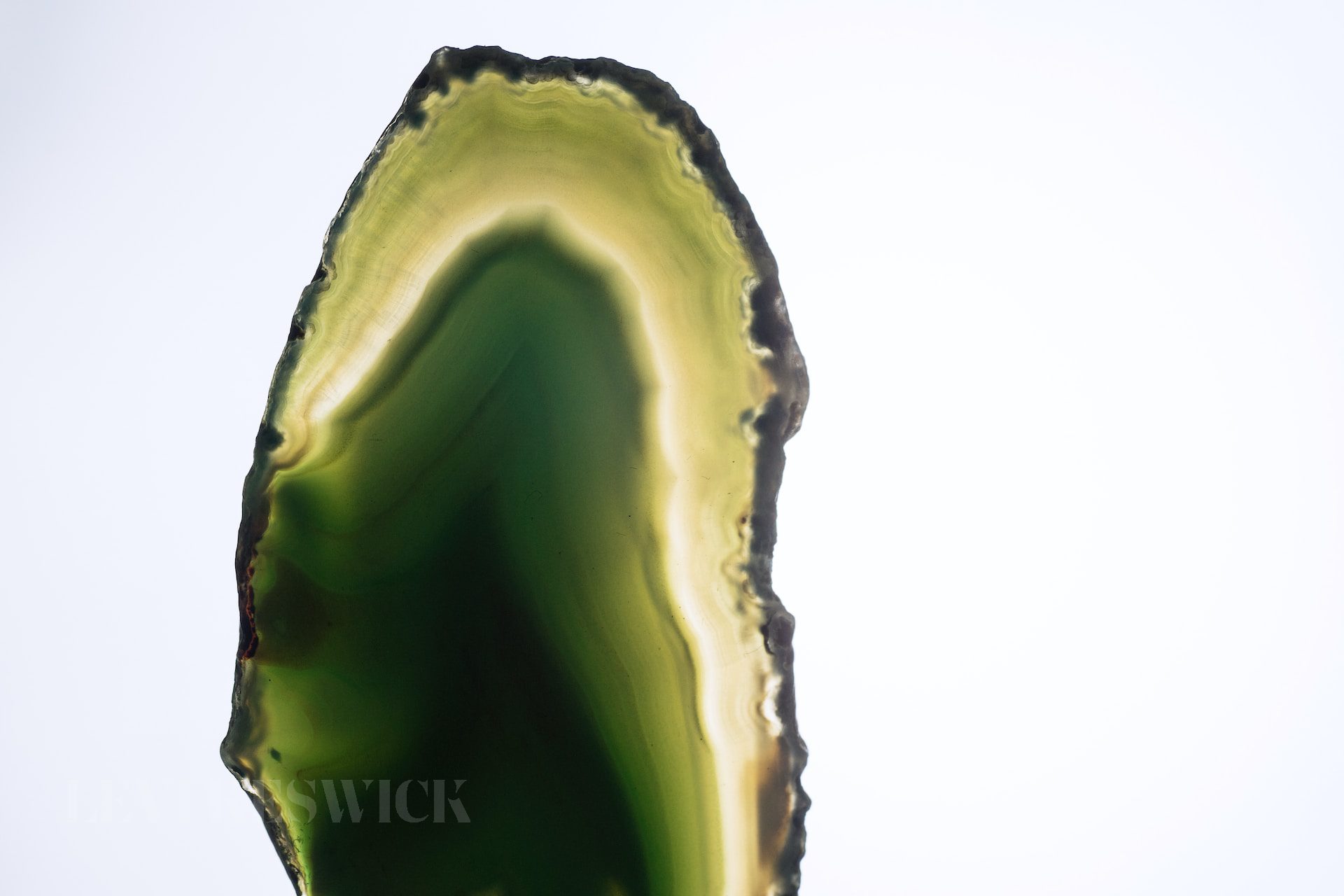Key Takeaways:
- Tree agate and moss agate are both types of minerals with similar chemical structures but different appearances
- Tree agate is translucent, while moss agate is opaque
- Both gemstones contain silicon dioxide, iron, and manganese as impurities
- They each have a mixture of chalcedony and green dendritic patterns
The Allure of Tree Agate and Moss Agate
Tree agate and moss agate are captivating minerals that have long intrigued gemstone enthusiasts and collectors. While these two stones share many similarities, there are subtle differences that set them apart. In this article, we will explore the difference between moss and tree agate, as well as their similarities, origin, and properties.
Tree Agate: A Close Look at Its Unique Characteristics
Tree agate, also known as dendritic agate, is a mineral characterized by its dendrites, which are crystal inclusions that grow in foliage or patterns resembling tree branches. These dendrites create a striking green effect on a white base, making the stone highly sought after for its beauty and connection to nature. Tree agate can be found in various locations, including Brazil, China, India, Australia, Madagascar, Mexico, Mongolia, and Namibia.
Properties and Composition of Tree Agate
Tree agate has a chemical composition of SiO2 and features a microcrystalline quartz structure with banded chalcedony. Its refractive index ranges from 1.544 to 1.553, and it has a hardness of 6 to 7 on the Mohs scale. The specific gravity of tree agate is between 2.59 and 2.67. The distinctive inclusions in tree agate are the result of manganese and iron oxides finding their way into cracks of white quartz during its formation.
Caring for Tree Agate
Tree agate is a durable stone that can be cleaned using warm, soapy water and a soft brush. It is essential to avoid harsh chemicals and thoroughly dry the stone after cleaning, as any remaining moisture can cause reactions, including rust in metal settings.
Moss Agate: Delving into Its Unique Features
Moss agate is a semi-precious gemstone formed from silicon dioxide, with green-colored minerals immersed in the stone. These minerals create filaments and patterns resembling moss, giving the stone its name. Moss agate differs from tree agate in that it is always opaque and appears in white and green colors. It is also not a true agate, as it lacks concentric banding. Moss agate is commonly found in India, Brazil, Uruguay, Central Europe, and the United States.
Properties and Composition of Moss Agate
Moss agate’s colors are due to trace amounts of impurities in the form of chrome or iron. These metals generate different colors based on their valence. Moss agate, like tree agate, contains silicon dioxide, iron, and manganese as impurities. However, its structure is different, making it a separate mineral.
Similarities Between Tree Agate and Moss Agate
Despite their differences, tree agate and moss agate share several similarities, including:
- Both are types of agate
- They each contain silicon dioxide
- Both have iron and manganese as impurities
- They have a mixture of chalcedony and green dendritic patterns
Conclusion: Understanding the Difference Between Moss and Tree Agate
While tree agate and moss agate share many similarities, the primary difference between them lies in their appearance. Tree agate is translucent and has a green color interspersed with colorless or pale blue silica, while moss agate is always opaque and appears in white and green colors. By understanding the unique characteristics, properties, and similarities between these two captivating gemstones, collectors and enthusiasts can appreciate their individual beauty and significance.
In summary, tree agate and moss agate are both enchanting minerals that share several similarities but are set apart by their distinct appearances. Tree agate is characterized by its translucent nature and green color interspersed with colorless or pale blue silica. On the other hand, moss agate is known for its opaque nature and white and green colors. By exploring the difference between moss and tree agate, we can gain a deeper understanding of these fascinating gemstones and appreciate their unique allure.








